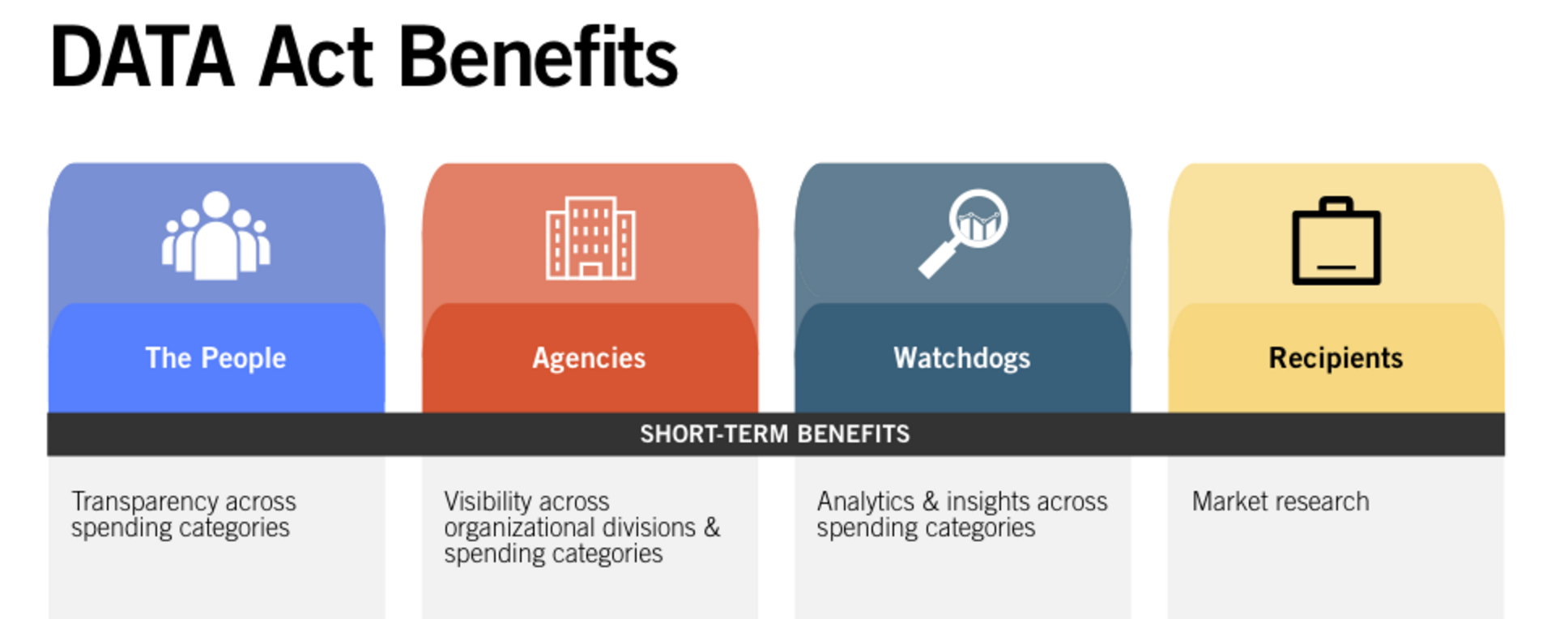This guest blog post is from Frank Landefeld, Managing Director at MorganFranklin Consulting and a member of the Data Foundation’s Board of Directors. Frank co-authored the Data Foundation’s first research report, The DATA Act: Vision & Value.
In the spring of 2016, federal agencies were working hard to figure out how to meet the DATA Act’s ambitious mandate. Every agency had to organize its spending information to match a government-wide data format that the Treasury Department had just announced. The objective? Create a single, unified data set of the entire executive branch’s finances, to support transparency and analytics government-wide.
Implementing the DATA Act was a huge challenge. To help inform - and motivate! - this hard work, in July 2016 the Data Foundation and MorganFranklin published The DATA Act: Vision & Value. The research report predicts the benefits of collecting all federal spending information in a single, searchable data set.
One year later, it is exciting to see that our predictions were absolutely correct!
Right on schedule, when the DATA Act’s main deadline arrived last month, every agency began reporting standardized spending information to the Treasury Department. Treasury aggregated all these submissions into one data set. That data set is now public. And it is performing as advertised!
We predicted that, once the DATA Act data set went live, it would deliver the following benefits in the short term:
For the people: Transparency across spending categories. This has now occurred!
Treasury's new beta.USASpending.gov site allows users to look at the whole picture of federal spending by agency, drill down into financial categories like account, obligation, and outlay to trace the connection from financial information into award information. For example, the public can now pull up a specific spending account and see all the grants and contracts paid out of that account - impossible until the new data set was published last month. For instance, here is the breakdown from a selected EPA account: https://beta.usaspending.gov/#/federal_account/1752
Taxpayers can now support and drive policies they are passionate about, based on data. Improved transparency is driving accountability and stewardship of taxpayer dollars.
For agencies: Visibility across organizational divisions and spending categories. Federal CFOs are now using the new data set to visualize the geographic impact of a specific program. This was not possible until agencies started connecting financial information with award data - because only award records list the place of performance.
The benefits aren't only for CFOs. Program managers can now easily access a full, public list of all their agency's unobligated balances - crucial for managers seeking to supplement their funding to address unforeseen program needs during execution. Agency and program executives can make informed data driven decisions to invest the unobligated balances for greatest mission impact.
At last week’s DATA Act Training Program, our faculty shared just a few of the new insights CFOs and program managers can find in the new data set.
For watchdogs: Analytics and insights across spending categories. Inspectors general are downloading the new data set and adding it to their anti-fraud analytics platforms. With fiscal pressures, increasing financial oversight, fraud prevention requirements, the ability to analyze an integrated data set from (often) diverse systems plays a pivotal role in early fraud detection to enhance mission effectiveness and gain insights.
For recipients: Market research. Grant recipients can now expand their view and develop a better understanding of the total grant spending and impact on their communities. With limited dollars in a competitive environment, grantees and contractors also benefit from availability of data for the overall spend as well as unobligated balances to align themselves strategically with the right partners to maximize their chances of receiving grants or funding.
All four of Vision & Value's short-term benefit predictions are coming true. At this month’s DATA Act Summit, demonstrations from the Treasury Department, the General Services Administration, and technology companies will dramatize all four types of benefits.
It's time to start working on the medium-term benefits! Over the next few years, as agencies get used to DATA Act reporting and everyone gets used to using the new data set, there’ll be greater challenges to master.
Here’s what we predicted would come next:
Will our medium-term predictions come true? Only with lots of hard work.
But we’re willing to do our part. Through the Data Foundation’s research and educational programs, like last week’s DATA Act Training Program, and through the advice and services MorganFranklin and other Data Foundation supporters provide, we’re committed to helping the DATA Act community reach these goals.


